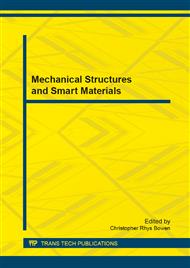p.189
p.195
p.199
p.204
p.210
p.214
p.218
p.225
p.230
Investigation of Surface Roughness on Platinum Deposited Wafer after Reactive Ion Etching Using SF6+Argon Gaseous
Abstract:
This paper investigates the factors that affect the surface roughness on a Platinum deposited wafer after reactive ion etching (RIE) using a combination of SF6 and Argon gaseous. A total of three controllable process variables, with 8 sets of experiments were scrutinized using a systematically designed design of experiment (DOE). The three variables in the investigation are ICP power, Bias power, and working pressure. The estimate of the effect calculated for ICP power, Bias power, and working pressure are-4.9288, -6.2383, and-4.7223 respectively. All three factors gave negative effects. This implies that the surface roughness decreases when ICP power, Bias power, and working pressure is high. The Bias Power is the most influential factor followed by ICP Power, and working pressure.
Info:
Periodical:
Pages:
210-213
Citation:
Online since:
January 2014
Price:
Сopyright:
© 2014 Trans Tech Publications Ltd. All Rights Reserved
Share:
Citation:


